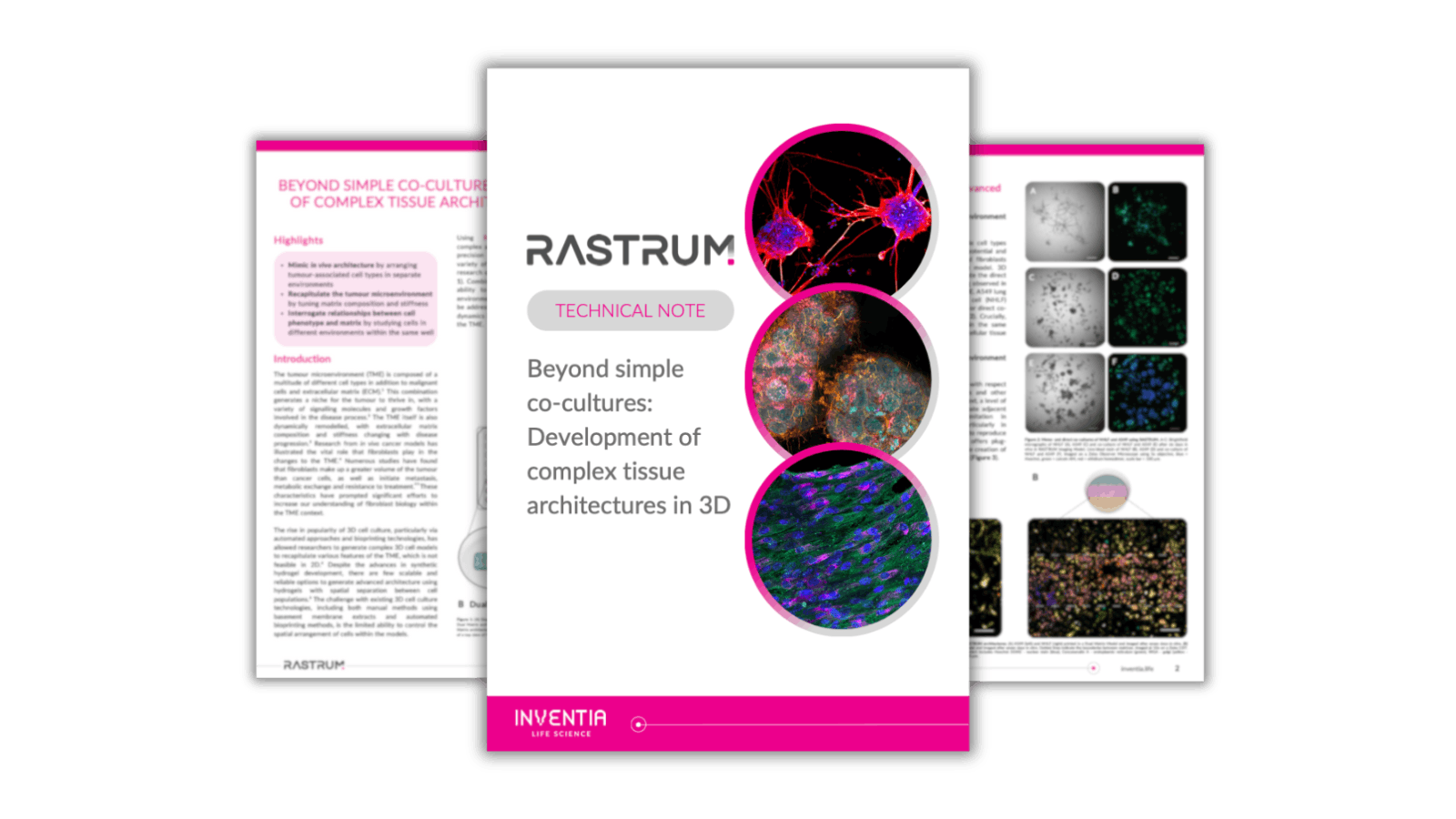
Beyond simple co-cultures: Development of complex tissue architectures in 3D
Overview
The tumour microenvironment (TME) is a complex ecosystem comprising various cell types, including malignant cells and extracellular matrix (ECM), creating a conducive niche for tumour growth influenced by signalling molecules and growth factors. The TME undergoes dynamic remodelling, with changes in ECM composition and stiffness during disease progression.
The technical note introduces a cutting-edge approach using the RASTRUM™ Platform, enabling the creation of complex architectures in a standard 96-well plate through high-precision droplet deposition. Leveraging RASTRUM™'s versatility, various architectures tailored to specific research questions, such as cancer pathogenesis, become possible by culturing cells in distinct, spatially separated matrix environments. This breakthrough approach empower researchers to explore deep questions about the TME and enhances the ability to understand the intricate dynamics between cancer cells, migration and their microenvironment.
Highlights
In this technical note, you'll learn that the RASTRUM™ Platform can:
- Mimic in vivo architecture by arranging tumour-associated cell types in separate environments
- Recapitulate the tumour microenvironment by tuning matrix composition and stiffness
- Interrogate relationships between cell phenotype and matrix by studying cells in different environments within the same well